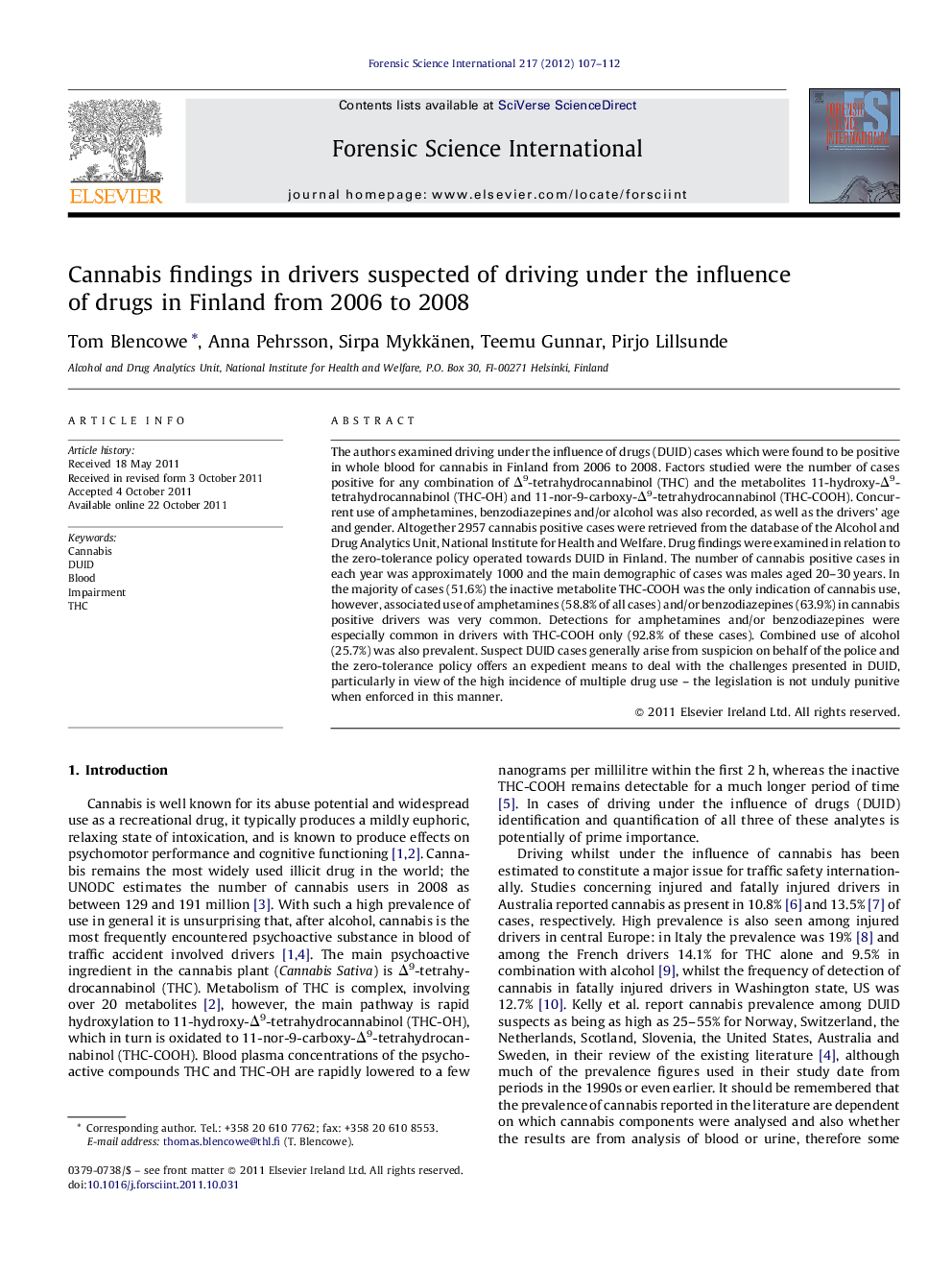| Article ID | Journal | Published Year | Pages | File Type |
|---|---|---|---|---|
| 96251 | Forensic Science International | 2012 | 6 Pages |
The authors examined driving under the influence of drugs (DUID) cases which were found to be positive in whole blood for cannabis in Finland from 2006 to 2008. Factors studied were the number of cases positive for any combination of Δ9-tetrahydrocannabinol (THC) and the metabolites 11-hydroxy-Δ9-tetrahydrocannabinol (THC-OH) and 11-nor-9-carboxy-Δ9-tetrahydrocannabinol (THC-COOH). Concurrent use of amphetamines, benzodiazepines and/or alcohol was also recorded, as well as the drivers’ age and gender. Altogether 2957 cannabis positive cases were retrieved from the database of the Alcohol and Drug Analytics Unit, National Institute for Health and Welfare. Drug findings were examined in relation to the zero-tolerance policy operated towards DUID in Finland. The number of cannabis positive cases in each year was approximately 1000 and the main demographic of cases was males aged 20–30 years. In the majority of cases (51.6%) the inactive metabolite THC-COOH was the only indication of cannabis use, however, associated use of amphetamines (58.8% of all cases) and/or benzodiazepines (63.9%) in cannabis positive drivers was very common. Detections for amphetamines and/or benzodiazepines were especially common in drivers with THC-COOH only (92.8% of these cases). Combined use of alcohol (25.7%) was also prevalent. Suspect DUID cases generally arise from suspicion on behalf of the police and the zero-tolerance policy offers an expedient means to deal with the challenges presented in DUID, particularly in view of the high incidence of multiple drug use – the legislation is not unduly punitive when enforced in this manner.
